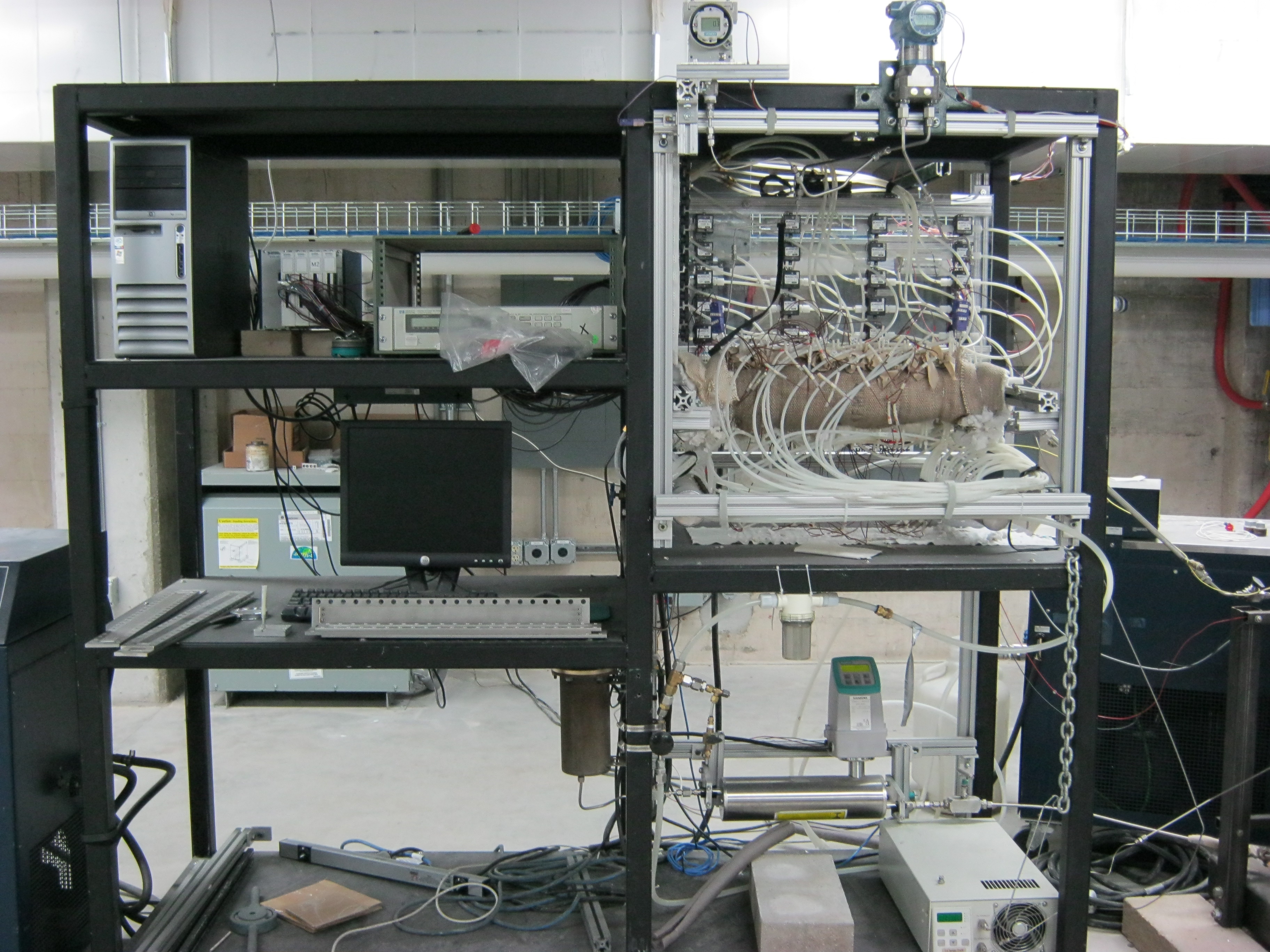Supercritical CO2 Testing
The importance of improved efficiency and reduced capital cost relative to the traditional Rankine superheated steam cycle has led to renewed interest in studying advanced Brayton cycles utilizing supercritical carbon dioxide as the working fluid for high temperature energy conversion. Previous work conducted by Dostal et al. 2006 has shown that the supercritical CO2 recompression cycle proposed by Feher may be superior to other advanced high temperature cycles both from the standpoint of increased thermal efficiency as well as reduced size and cost of the required turbo-machinery components [1, 2]. These advantages make the cycle especially well-suited for any high temperature reactor system including the, the Sodium-Cooled Fast Reactor (SFR), the Fluoride Salt-Cooled High Temperature Reactor (FHR), the Lead-Cooled Fast Reactor (LFR) and the Very High Temperature Reactor (VHTR).
The cycle is also of interest for use in Concentrating Solar Power (CSP) systems. Wright et al. 2008 has begun testing supercritical CO2 compressors and turbines fabricated by Barber Nichols Inc. and found promising initial results [3]. Argonne National laboratory has analyzed several configurations coupled to advanced reactor designs and conducted initial studies on commercial PCHEs (Printed Channel Heat Exchangers) fabricated by Heatric. The Naval Reactors program has also expressed interest in S-CO2 systems, due to their high power density and is in the process of testing a split turbine compressor system.
The goal of this research is to investigate specific key fundamental phenomena that will improve the analysis and therefore the performance of the components that are currently being tested. This research will aid in the scale up of future test equipment with the goal of developing a large-scale S-CO2 advanced power system. With this goal in mind, the following critical areas will be addressed:
- Perform controlled, highly instrumented heat transfer experiments on PCHE geometries that can be analyzed with both 1D models and with more complex 3D CFD models. Based on the analysis of the experiments and the detailed CFD calculations, improvements to the models currently used in plant dynamics code calculations will be made.
- Perform controlled, highly instrumented experiments to determine the loss coefficients, pressure drops and flow through control valve geometries and piping or component boundary ruptures. These data are needed as input in to the plant dynamics system code analyses.
- Perform CFD analysis of the PCHE geometries tested in the experimental program and develop numerical models to help understand the flow and pressure drop associated with S-CO2 flowing through valve geometries, piping and system components.
- Utilize data and CFD results to further improve the models used in the existing Plant Dynamics Code that has been developed by the national laboratory partner.
- Implement optimized fluid property algorithms within the Plant Dynamics Code and CFD codes to increase the calculational accuracy and reduce computational costs.

